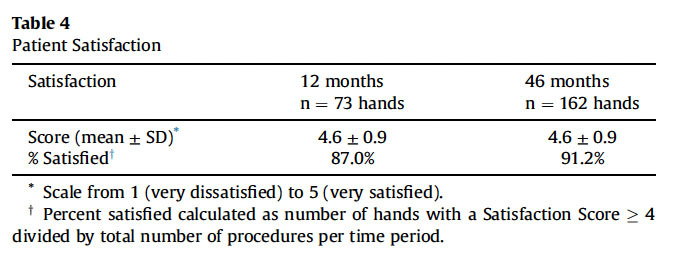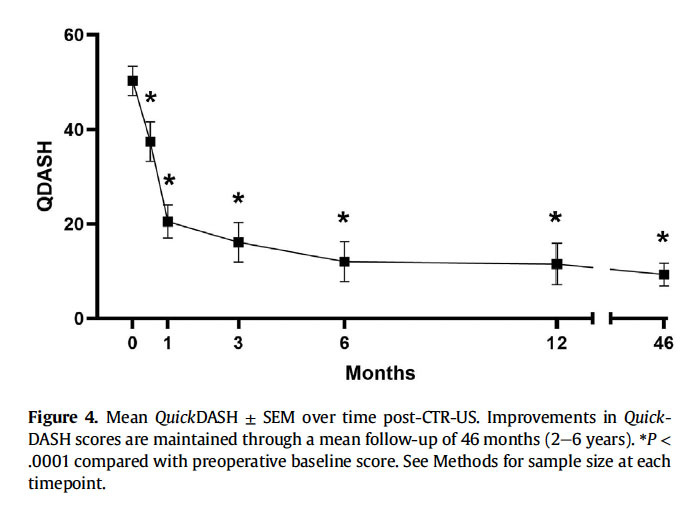

Carpal tunnel syndrome (CTS) affects millions of people worldwide, causing pain, numbness, and weakness in the hands. For many, surgery was the only option when conservative treatments fail. Traditionally, open and endoscopic surgical techniques have been the standard, but a newer, minimally invasive approach using ultrasound guidance is proving to be a game-changer.
A recent study by Cano et al. provides compelling evidence for the long-term success of ultrasound-guided carpal tunnel release (CTR-US), with patients experiencing significant and lasting symptom relief (Cano et al., 2024).
CTR-US is a minimally invasive procedure that uses real-time ultrasound imaging to guide the release of the transverse carpal ligament. This technique allows for precise visualization of critical structures, reducing the risk of nerve or vascular injury. Unlike traditional methods that require a larger incision, CTR-US involves a small incision, often less than 5 mm, leading to less post-operative pain, faster recovery, and lower complication rates (Rojo-Manaute et al., 2016).
The study conducted by Cano et al. followed 102 patients (162 hands) who underwent CTR-US, with a follow-up period ranging from two to six years (Cano et al., 2024). The findings highlight the long-term effectiveness and safety of this procedure:

The results of this study reinforce the growing evidence that CTR-US is not only a safe and effective option but also a superior alternative for many patients with CTS. As more surgeons adopt this technique, it has the potential to become the new standard of care for carpal tunnel release. If you're considering carpal tunnel surgery, discussing ultrasound-guided options with your healthcare provider may be the key to a quicker recovery and lasting relief. According to Cano et al. (2024), 91.2% of patients reported satisfaction with CTR-US, and none required revision surgeries over a follow-up period of two to six years, indicating its long-term effectiveness.
Open carpal tunnel release (OCTR) involves a larger incision and a longer recovery period, while endoscopic carpal tunnel release (ECTR) uses a smaller incision but still requires specialized equipment and carries a risk of incomplete ligament release. In contrast, CTR-US provides real-time imaging for precise ligament transection, reducing complications and accelerating recovery.
Ultrasound-guided carpal tunnel release is revolutionizing the treatment of CTS by offering a minimally invasive, highly effective alternative to traditional surgical methods. With strong long-term results, high patient satisfaction, and reduced recovery times, CTR-US is paving the way for the future of hand surgery.
Are you or a loved one struggling with carpal tunnel syndrome? Talk to your doctor about ultrasound-guided carpal tunnel release and see if it’s the right option for you!

Are you or a loved one struggling with carpal tunnel syndrome? Talk to your doctor about ultrasound-guided carpal tunnel release and see if it’s the right option for you!
(781) 591-7855
20 Walnut St
Suite 14
Wellesley MA 02481
Discover how PRP injections may outperform traditional treatments for mild to moderate carpal tunnel syndrome. Backed by a 2020 meta-analysis of clinical trials.
Read MoreCarpal Tunnel Syndrome (CTS) is one of the most common nerve-related conditions, affecting millions of people worldwide—especially those who spend long hours typing, using tools, or performing repetitive hand
Read More